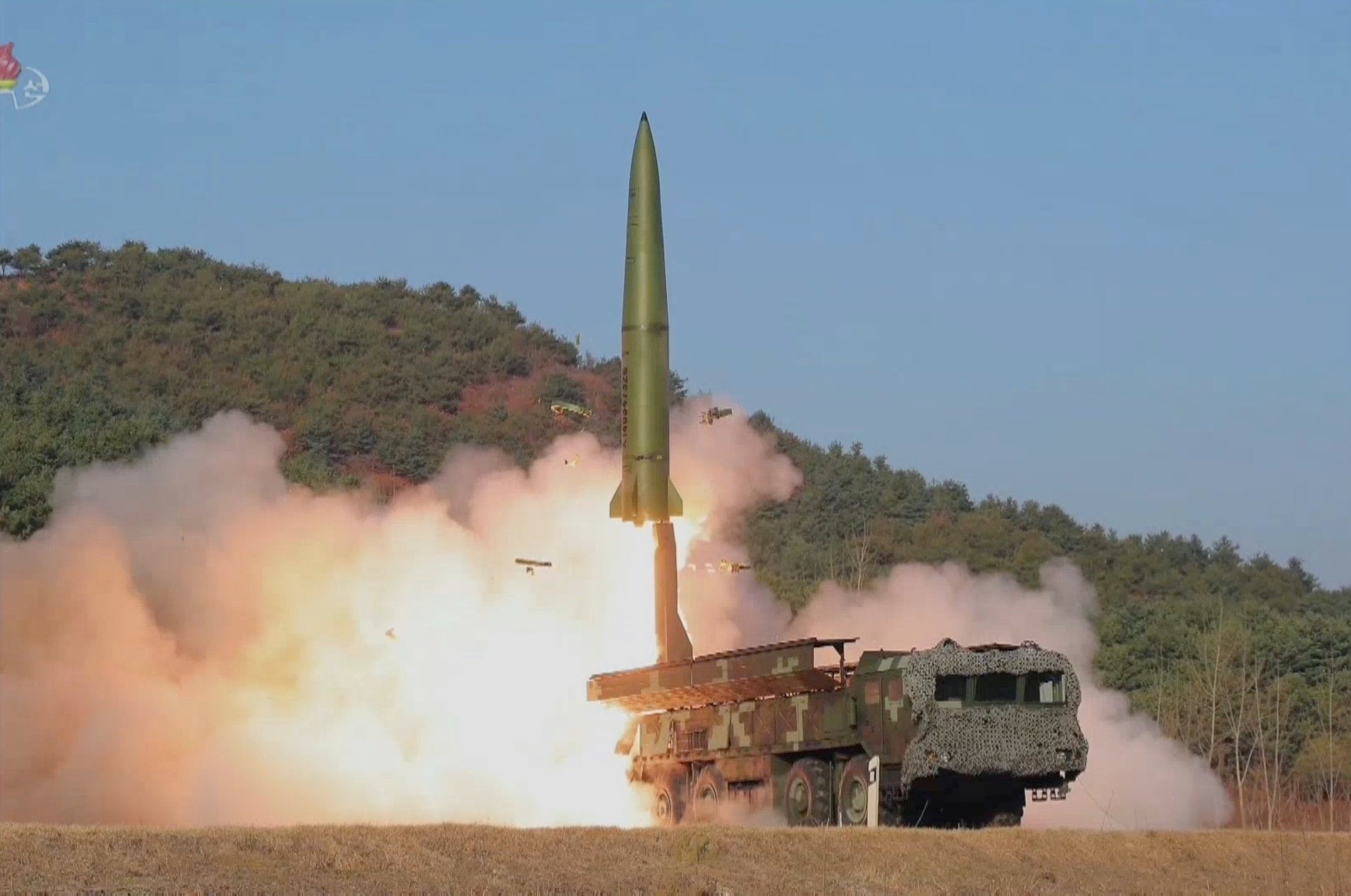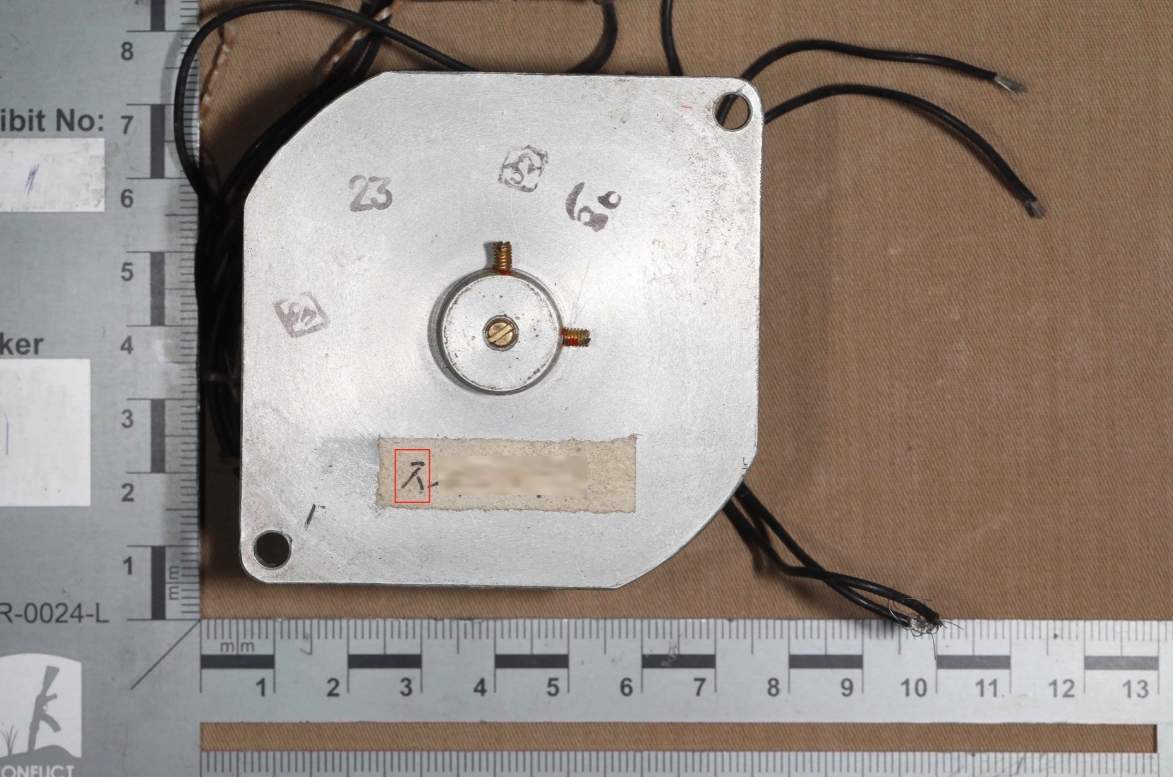
Conflict Armament Research (CAR) field investigation team found North Korean marks on a “Russian” missile
Investigators from an international organization examined remains of the North Korean missile that Russia used to hit Kharkiv and compared it to the Iskander missile.
The analysis of missile remnants was conducted by a Conflict Armament Research (CAR) field investigation team, an independent research organization that monitors arms’ transfers.
The Russian military fired this missile at the Ukrainian city of Kharkiv on January 2, 2024.
Based on several unique features observed during documentation, CAR determined that this missile was manufactured in the Democratic People’s Republic of Korea (North Korea) and is probably a KN-23 or KN-24 (Hwasong-11A and Hwasong-11B respectively).
- Tail section of a North Korean KN-23/KN-24 missile that Russia fired at the Ukrainian city of Kharkiv on January 2, 2024. Ukraine. Photo credits: Conflict Armament Research (CAR)
- Tail section of a Russian 9M723 Iskander missile for comparison, documented by CAR in Ukraine on 15 January 2024. Photo credits: Conflict Armament Research (CAR)
North Korea is the subject to a long-standing UN arms embargo. Security Council resolutions prohibit UN member states from purchasing arms or related equipment from North Korea.
However, Russia’s use of such missiles is yet another demonstration of its intention to continue military operations in Ukraine at the cost of undermining UN resolutions.

In Ukraine, a CAR field investigation team documented the missile’s rocket motor and its tail section.
CAR investigators also compared characteristics of this missile against features of similar systems manufactured by the Russian Federation.
For example, CAR identified several properties that clearly differentiate this missile from the Russian-made Iskander system.
One distinction relates to tail sections: the North Korean missile’s tail section has a diameter of 110 cm, while the Iskander’s is smaller at around 95 cm.

The tail section of the missile documented by CAR investigators featured four jet vane actuators (two still attached and two separated)
These jet vane actuators direct a missile’s thrust and thus influence its trajectory.
“The North Korean missile’s jet vane actuators differ from those of the above-mentioned Iskander system in size, shape, and construction,” CAR said.
CAR documented a bolt pattern on the front section of the rocket motor that strongly resembles that of a KN-23 or KN-24 missile.
- This image shows the front end of the rocket motor of a North Korean KN-23 or KN-24 missile, which Russia fired at the Ukrainian city of Kharkiv on January 2, 2024. Ukraine. Photo credits: Conflict Armament Research (CAR)
- Front end of the rocket motor of a North Korean KN-23 or KN-24 missile in an official North Korean photo taken at the 112 plant. Photo credits: Conflict Armament Research (CAR)
In both CAR’s documentation and in factory images, for example, the central disc exhibits 20 bolts evenly distributed around its circumference.
Korean marks
On a barometer documented in Ukraine as part of the missile wreckage, CAR investigators observed a label with the handwritten Korean (Hangul) character ‘ㅈ’ (see highlighted mark).

CAR investigators documented the presence of the mark ‘112’ on several different components found in the missile wreckage.
This mark may refer to the February 11 plant in North Korea, where these missiles are reportedly assembled.
- ‘112’ mark stamped on the interior of the rocket motor of the North Korean KN-23 or KN-24 missile, which Russia fired at the Ukrainian city of Kharkiv on January 2, 2024. Ukraine. Photo credits: Conflict Armament Research (CAR)
- ‘112’ mark stamped on the interior of the rocket motor of the North Korean KN-23 or KN-24 missile, which Russia fired at the Ukrainian city of Kharkiv on January 2, 2024. Ukraine. Photo credits: Conflict Armament Research (CAR)
‘112’ mark stamped on each of the four jet vane actuators of the North Korean KN-23 or KN-24 missile.
SUPPORT MILITARNYI
Even a single donation or a $1 subscription will help us contnue working and developing. Fund independent military media and have access to credible information.


 Роман Приходько
Роман Приходько 
 Віктор Шолудько
Віктор Шолудько 
 Андрій Харук
Андрій Харук 

 Андрій Тарасенко
Андрій Тарасенко 
 Yann
Yann 
 СПЖ "Водограй"
СПЖ "Водограй" 

 ГО "Військова школа "Боривітер"
ГО "Військова школа "Боривітер" 

 Катерина Шимкевич
Катерина Шимкевич 
 Олександр Солонько
Олександр Солонько 
 Андрій Риженко
Андрій Риженко 










